Sandakan travel - Malaysia, Asia
Sandakan, located on the eastern coast of Sabah, Malaysia, is known as the gateway to Borneo's wildlife, surrounded by lush rainforests and the Sulu Sea. This city, once the capital of British North Borneo and is surrounded by stunning landscapes, including lush rainforests and the Sulu Sea, making it a gateway to Borneo's rich biodiversity. It is rich in history, having been founded in 1874 and originally named Elopura, meaning "The Beautiful City," before being renamed Sandakan, which translates to "the place that was pawned." Key attractions include the Sepilok Orangutan Sanctuary, the Gomantong Caves, and the Labuk Bay Proboscis Monkey Sanctuary, making it a prime destination for nature lovers and wildlife enthusiasts. You can also enjoy local cuisine, such as fresh seafood and traditional dishes influenced by the diverse cultures in the area, enhancing their experience in this charming and historically significant city.
Population: Estimate 400,000 people (as of 2024)
Economy: Sandakan's economy is diverse, with key sectors including tourism, agriculture, and trade. As one of Sabah's major ports, it plays a crucial role in exporting palm oil, tobacco, cocoa, coffee, and timber, historically making it a significant hub for these industries. The city has shifted focus towards eco-tourism, capitalizing on its proximity to attractions like the Sepilok Orangutan Rehabilitation Centre and the Kinabatangan River, which draw nature enthusiasts and wildlife lovers.
The local government is actively promoting tourism to revive the economy, with initiatives to improve infrastructure, such as upgrading the Sandakan Airport to attract more visitors.
Landmarks: Sepilok Orangutan Rehabilitation Centre, Agnes Keith House, Sandakan War Memorial Park, Gomantong Caves, Labuk Bay Proboscis Monkey Sanctuary, Masjid Jamek (Sandakan Mosque), St. Michael's and All Angels' Church, Phu Jih Shih Temple
Malaysia
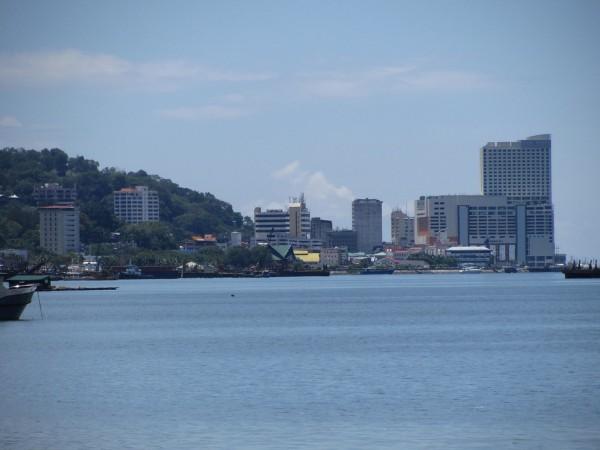
Overview of Sandakan
History & Cultural Influence
Sandakan, located on the eastern coast of Sabah, Malaysia, has a rich history that significantly influences its cultural landscape today. Officially founded on June 21, 1897, by British accountant William B. Pryer, Sandakan was initially known as Elopura, meaning "The Beautiful City," but was renamed by locals to reflect its history as "the place that was pawned." The city thrived as a major port for timber exports and became known as "Little Hong Kong" due to the influx of Chinese immigrants who contributed to its economic development.
The city faced significant challenges during World War II, including occupation by Japanese forces and devastating bombings, which nearly destroyed it. This tumultuous period led to Sandakan becoming a British colony post-war and shaped its character as a resilient community. Today, Sandakan is recognized as a gateway to Borneo's rich biodiversity, with attractions like the Sepilok Orangutan Rehabilitation Centre and the Gomantong Caves, reflecting the city's transformation from a trade hub to an eco-tourism destination.
Interaction with The Locals
When visit to Sandakan, you can expect a warm and friendly interaction with the locals, who are known for their hospitality and welcoming nature. The city has a population with a diverse ethnic makeup that includes Malay, Chinese, and indigenous groups, contributing to a rich cultural tapestry.
The general attitude towards tourists is positive, as locals appreciate the economic benefits that tourism brings to the area. However, visitors may encounter curiosity from locals, particularly children, who may stare or make jokes in a lighthearted manner. Engaging with locals respectfully and with a smile can foster friendly interactions, making for a more enriching travel experience.
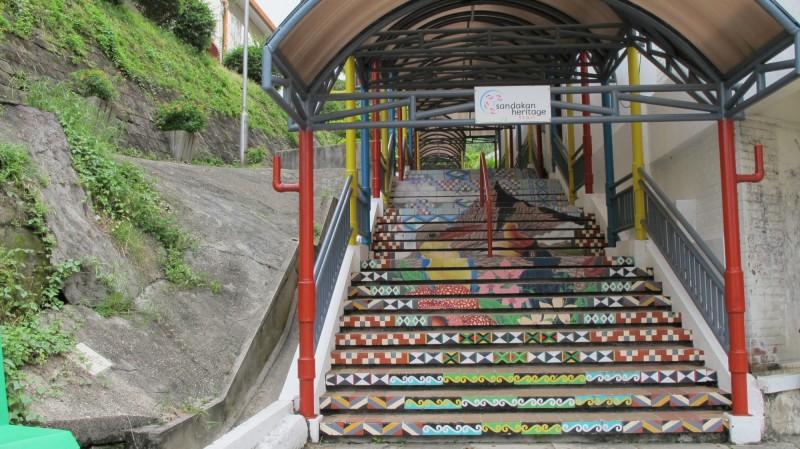
Sandakan Heritage Trail - © gather
Top attractions in Sandakan
Sandakan, a charming coastal town in Sabah, Malaysia, offers the chance to explore the Sepilok Orangutan Rehabilitation Centre, where you can witness these incredible primates up close in their natural habitat. Additionally, you can delve into the region's rich history at the Sandakan Memorial Park, which commemorates the poignant WWII events, or take a scenic boat ride along the Kinabatangan River, known for its diverse wildlife and breathtaking landscapes.
Sepilok Orangutan Rehabilitation Centre
Location: Approximately 25 kilometers west of Sandakan, within the Kabili-Sepilok Forest Reserve, Sabah, Malaysia.
A must-visit for wildlife enthusiasts, this world-renowned sanctuary has been dedicated to rehabilitating orphaned and injured orangutans since 1964. You have the unique opportunity to witness these majestic creatures up close as they prepare to return to their natural jungle home.
Sandakan War Memorial Park
Location: 11 km outside of Sandakan.
This poignant park honors the brave souls who suffered during World War II, particularly those involved in the infamous Sandakan Death March. Wander through the memorials and immerse yourself in the significant history of the events that unfolded here.
Agnes Keith House
Location: Perched on a hilltop in Sandakan, Sabah, Malaysia.
Step back in time at the Agnes Keith House, the former residence of the American author known for her vivid portrayals of life in Borneo. Now a museum, the house offers you a fascinating glimpse into colonial-era Sandakan, along with stunning views of the surrounding landscape.
Gomantong Caves
Location: About 30 kilometers southeast of Sandakan, Sabah, Malaysia.
Explore the mystical Gomantong Caves, famed for their edible swiftlet nests, harvested for bird's nest soup. You can venture into this unique limestone cave system, home to a diverse ecosystem that includes bats and various bird species.
Labuk Bay Proboscis Monkey Sanctuary
Location: Approximately 38 kilometers from Sandakan, within an oil palm estate in Sabah, Malaysia.
A hidden gem for nature lovers, this sanctuary is dedicated to the conservation of the endangered proboscis monkey. Watch these distinctive primates in their natural environment and gain insight into the vital conservation efforts protecting their future.
Sandakan Heritage Trail
Location: Spanning various historical sites in Sandakan, Sabah, Malaysia.
Discover the rich history of Sandakan by walking the Sandakan Heritage Trail. This path connects a series of historical landmarks, including the Sandakan Memorial Park and colonial-era buildings, offering you a window into the city’s vibrant past and cultural legacy.
Bornean Sun Bear Conservation Centre
Location: Next to the Sepilok Orangutan Rehabilitation Centre, in the Sepilok area of Sandakan, Sabah, Malaysia.
Visit the Bornean Sun Bear Conservation Centre to learn about the world’s smallest bear species and the challenges they face. This center is dedicated to their rehabilitation and conservation, providing a natural habitat where you can observe these incredible creatures while supporting vital conservation efforts.
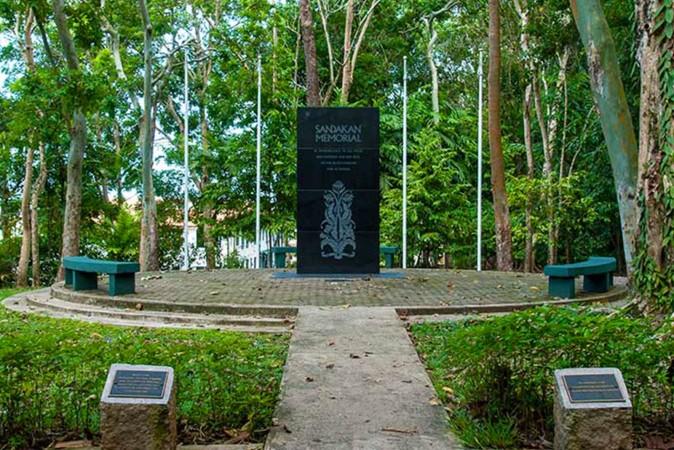
Sandakan War Memorial Park - © gather
Must-Try Dishes in Sandakan
When in Sandakan, you must try the local seafood, renowned for its freshness and rich flavors, especially the famous grilled fish and prawns. Don't miss out on the city’s unique culinary delight, the ngiu chap (beef noodle soup), a comforting bowl of tender beef, tripe, and noodles in a flavorful broth. For dessert, indulge in butter milk buns, a soft and sweet treat that perfectly caps off your culinary adventure in this coastal town.
Lobster Mee
Lobster Mee stands out with its fresh lobster served over noodles in a rich, flavorful broth seasoned with garlic and spices. This dish perfectly embodies the region’s seafood excellence, showcasing both the freshness of local ingredients and culinary creativity.
Seafood Bak Kut Teh
Offering a twist on the traditional herbal soup, Seafood Bak Kut Teh replaces pork with fresh seafood, creating a broth that's richly infused with the sweetness of the sea. It’s a dish that beautifully blends Sandakan’s coastal heritage with Chinese culinary influences.
UFO Tarts
Also known as "cow dung tarts" for their unique shape, UFO Tarts are a favorite local snack filled with creamy vanilla custard. These playful pastries are a delightful treat that adds a fun element to Sandakan’s diverse food culture.
Fish Noodles
Made from fish paste, Fish Noodles have a chewy texture and rich seafood flavor that set them apart. Served in a savory broth with various toppings, this dish highlights Sandakan’s thriving seafood industry and offers a taste of the region’s fishing traditions.
Century Egg Dumplings
Century Egg Dumplings bring a bold flavor to the table, featuring preserved century eggs wrapped in delicate dumpling skin. Typically served with a soy-based dipping sauce, this snack reflects the deep influence of Chinese cuisine in Sandakan.
Sea Prawn Crispy Noodles
Large, succulent sea prawns take center stage in Sea Prawn Crispy Noodles, served over a bed of crispy noodles and coated in a savory sauce. This dish emphasizes the freshness of Sandakan’s seafood and is a go-to for those craving a satisfying meal.
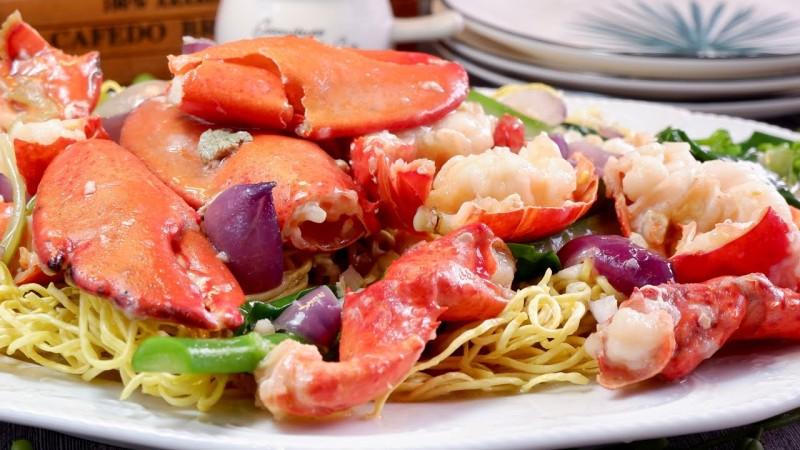
Lobster Mee - © gather
Festivals & Local Celebrations
Sandakan Cultural Festival
When: Annually in August or September.
Celebrate the rich diversity of Sandakan at this vibrant festival. You can enjoy a variety of cultural performances, taste local delicacies from food stalls, and explore cultural exhibits. It’s an interactive experience where you can immerse yourself in the traditions of the region.
Sandakan Seafood Festival
When: Held in August or September, coinciding with the Cultural Festival.
Dive into Sandakan's seafood heritage at this festival, where you can indulge in a wide array of fresh seafood dishes prepared by local chefs. The festival also features cooking demonstrations and seafood-eating competitions, making it a must-visit for seafood lovers.
Sandakan Mooncake Festival
When: Celebrated in September or October, during the Mid-Autumn Festival.
Experience the Chinese tradition of the Mid-Autumn Festival during the Sandakan Mooncake Festival. Enjoy mooncakes, admire beautiful lanterns, and watch cultural performances, all while learning more about Chinese culture and traditions.
Sandakan Dragon Boat Festival
When: Held in June or July.
Get ready for the excitement of dragon boat races on the Sandakan River. This festival is not just about the races—you can also savor traditional Chinese food and drinks and take part in cultural activities, making it a lively event for everyone.
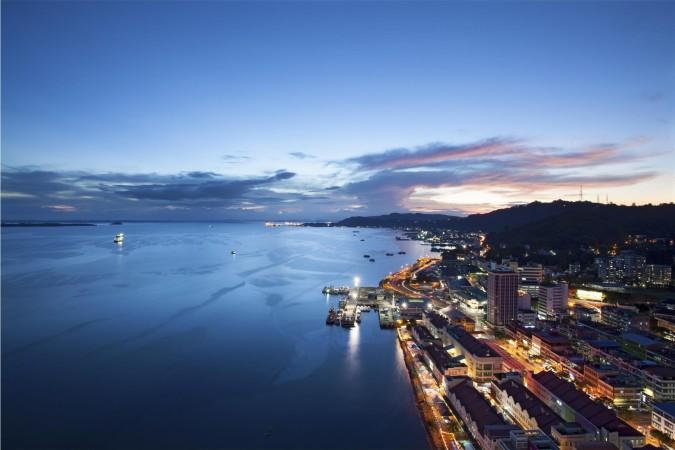
Sandakan aerial view - © gather
Weather in Sandakan: Best Time to Visit
Average Temperatures
Sandakan has a tropical rainforest climate with high temperatures year-round, ranging between 31°C and 34°C (88-93°F).
The hottest month is May with an average of 29°C (84°F), while January is the coldest at 27°C (81°F).
Rainfall
Sandakan experiences significant rainfall throughout the year, with an average annual precipitation of 2184 mm to 3988 mm.
The wettest months are October to February, with December being the wettest.
April is the driest month.
Best Time to Visit
The best time to visit Sandakan for hot-weather activities is from early February to mid April, based on the beach/pool score.
January is the sunniest month of the year.
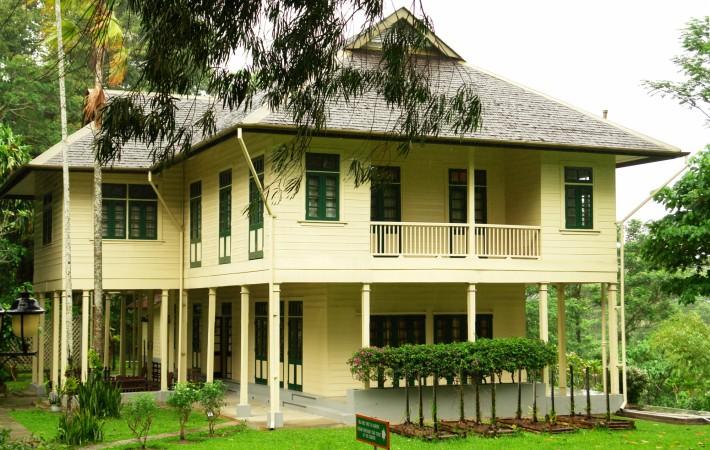
Sabah Tourism Board - © gather
Culture Etiquette in Sandakan
Greetings
A warm welcome goes a long way in Sandakan! You can greet locals with "selamat datang" (welcome) or "apa khabar" (how are you). It’s polite to address older individuals as "uncle" or "auntie." While handshakes are generally acceptable, be aware that some Malay women may not shake hands with men. In such cases, a slight bow with your hand placed on your heart is a respectful gesture.
Dress Code
Modesty is key, especially when visiting religious sites or local homes. While casual attire is common, it’s best to cover your shoulders and knees. For visits to temples or mosques, long sleeves are recommended for everyone, and women should cover their hair with a scarf. On the beach, bikinis are fine, but remember that nudity and skinny-dipping are not acceptable.
Dining Etiquette
When dining, it’s customary to let the eldest person start eating first, with everyone else following. In some homestays, you might eat with your hands, so it’s good to be prepared for that. Be mindful of dietary restrictions, especially in Muslim communities where pork is prohibited. Always ask about ingredients if you have specific dietary needs.
General Conduct
Remember that the left hand is considered unclean in many local customs, so always use your right hand for giving, receiving, and eating. Show respect for local customs and traditions, particularly in religious or cultural settings, and approach every interaction with a smile and an open mind.
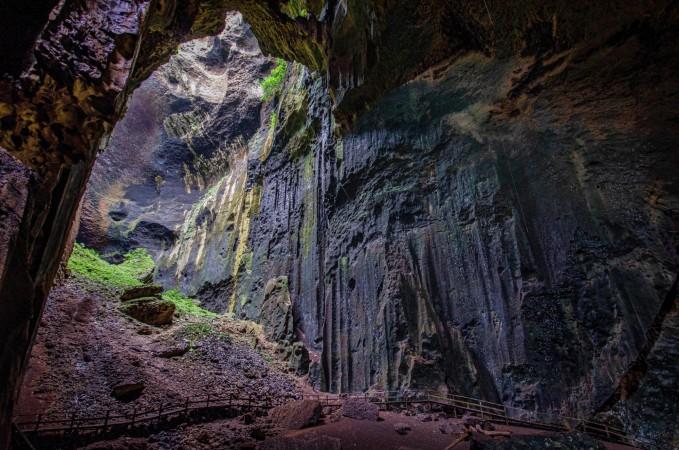
Gomantong Caves - © gather
Essential Travel Information
Getting to Sandakan
By Air
- Sandakan Airport (SDK) is located about 14 km from the city center and serves as an important gateway to Sandakan.
- Airlines operating from the airport include AirAsia, Malaysia Airlines, and MASwings, connecting Sandakan to domestic destinations like Kuala Lumpur, Kota Kinabalu, Kudat, and Tawau.
By Bus
- Long-distance buses connect Sandakan to other cities in Sabah, with the main bus terminal located about 4 km north of the town.
- Local buses and minivans provide transportation within Sandakan and to nearby areas like Sepilok.
Getting Around Sandakan
By Taxi
- Taxis are available in Sandakan, but most are non-air conditioned and non-metered, so fares need to be negotiated.
- A taxi from the airport to the city center costs around RM25-30.
By Ride-Sharing
- Grab operates in Sandakan, including from the airport, with a ride from the airport to the city center costing around RM18.
By Bus and Minivan
- Local buses and minivans are a cheaper alternative to taxis for getting around Sandakan.
- Minivans come in three color stripes (purple, blue, and yellow/brown) and stop at regular bus stops along the main road.
On Foot
- Sandakan is a relatively small town, making it easy to explore on foot.
- There is also a walking trail that covers the main sites in the city.
ATMs and Banks
- Maybank: Located at Mile 4, it offers standard banking services and has an ATM available 24/7. The airport branch operates from 6 AM to 12 AM daily, providing convenient access for travelers arriving by air.
- CIMB Bank: Situated at Bandar Utama, this bank offers a range of financial services, including personal banking and loans. The branch operates from 9:15 AM to 4:30 PM on weekdays.
- RHB Bank: Located at Prima Square, RHB Bank is known for its customer service and offers various banking products. The branch operates from 9:15 AM to 4:15 PM on weekdays.
- ATMs: Multiple ATMs are scattered throughout Sandakan, including those at Maybank and RHB Bank, providing easy access to cash for visitors.
Accommodation Choices
Hotels
- Hotel Sandakan: A popular choice for travelers, offering comfortable rooms with beautiful views of the waterfront. It is well-situated for exploring local attractions.
- Four Points by Sheraton Sandakan: This upscale hotel features modern amenities, a swimming pool, and dining options, making it ideal for both leisure and business travelers.
- Borneo Cove Hotel: A budget-friendly option that provides basic accommodations and is conveniently located near the city center.
Guest Houses and Lodges
- Sandakan Backpackers: A budget-friendly hostel that offers dormitory-style accommodations and a communal atmosphere, perfect for travelers looking to meet others.
- Homestays: Various homestays are available, providing a more personal experience and a chance to engage with local culture. These options often include meals and guided tours.
Articles for you

Explore Yala National Park - Sri Lanka Travel, Asia
Tucked away in Sri Lanka’s southeastern corner, Yala National Park is where wild nature meets deep tradition. Known worldwide for its leopard population, the park is also home to elephants, sloth bears, crocodiles, and hundreds of bird species. Beyond wildlife, Yala opens doors to a cultural landscape dotted with ancient temples, Buddhist ruins, and coastal villages. For travelers seeking more than just a safari, Yala offers a chance to explore eco-tourism, local communities, and sacred heritage sites.
Population: The Yala National Park area doesn’t have a human population.
Economy: The economy around Yala National Park thrives on a blend of eco-tourism, agriculture, and local services. Safari tours, eco-lodges, and cultural experiences drive steady income for nearby towns like Tissamaharama and Kataragama, supporting thousands of families.
Landmarks: Famous for Block I of Yala and wildlife encounters, including elephants, sloth bears, crocodiles, and exotic bird species.

Explore Galle - Sri Lanka Travel, Asia
Nestled on Sri Lanka’s southern coastline, Galle is a vibrant city where history meets the sea. Its cobbled streets, colonial architecture, and serene beaches make it a must-visit destination for travelers seeking a blend of culture, adventure, and relaxation. A UNESCO World Heritage site, Galle captivates visitors with its Dutch Fort, bustling markets, and friendly locals. Whether you’re exploring the ramparts at sunset or savoring fresh seafood by the shore, Galle promises an unforgettable journey into Sri Lanka’s heritage.
Population: Approximately 113,000 in 2023.
Economy: Galle’s economy thrives on tourism, trade, and fisheries. The city’s historic fort, colonial architecture, and coastal charm draw thousands of international visitors each year, making tourism its main economic driver. Fishing remains vital for local livelihoods, supplying fresh seafood across the region.
Landmarks: Famous for the Galle Fort, Dutch Reformed Church & Maritime Museum, and Unawatuna Beach.

Explore Bentota - Sri Lanka Travel, Asia
Nestled along Sri Lanka’s southwestern coast, Bentota is a tropical paradise that blends golden beaches, vibrant culture, and thrilling adventures. Famous for its calm waters, luxury resorts, and scenic river estuary, Bentota has become a top destination for travelers seeking both relaxation and authentic experiences. From serene beach walks at sunrise to adrenaline-pumping water sports, this coastal town offers a perfect balance of leisure and exploration. With its proximity to Colombo and Galle, Bentota is easy to reach, making it an ideal stop for both short escapes and extended holidays.
Population: Approximately 37,000 in 2023.
Economy: Bentota’s economy thrives mainly on tourism, which drives local businesses such as hotels, restaurants, and wellness retreats. The town also benefits from fishing, coconut cultivation, and handicrafts like wood carving and batik textiles. Many residents rely on the growing demand for water sports and Ayurvedic treatments, making tourism the backbone of both income and employment in the area.
Landmarks: Famous for Bentota Beach, Bentota River Safari, and Kande Vihara Temple.

Explore Mirissa - Sri Lanka Travel, Asia
Mirissa is a charming coastal town on Sri Lanka’s southern shoreline. Known for its golden beaches, turquoise waters, and vibrant marine life, it has become a must-visit stop for travelers exploring the island. Many come for whale watching, surfing, and sunset views at Coconut Tree Hill, but Mirissa offers much more than postcard beauty. The fishing boats you see anchored by the bay carry generations of stories. Local traditions, delicious cuisine, and a laid-back rhythm of life shape every visitor’s experience.
Population: Approximately 4,700 in 2023.
Economy: Mirissa’s economy is largely shaped by its coastal location. Fishing has long been the backbone of local livelihoods, with generations relying on the Indian Ocean for income. In recent decades, tourism has become the main driver of growth, thanks to whale watching, surfing, and beachside hospitality.
Landmarks: Famous for Mirissa Beach, Coconut Tree Hill, and Parrot Rock Bridge.

Explore Nuwara Eliya - Sri Lanka Travel, Asia
Tucked away in the Central Highlands of Sri Lanka, Nuwara Eliya is often called “Little England”. With its rolling tea plantations, cool misty mornings, and colonial charm, this mountain town feels like a step into another world. Travelers come here to breathe fresh air, walk through flower gardens, sip the finest Ceylon Tea, and enjoy a pace of life far from the island’s busy cities. Whether you’re drawn by scenic landscapes, heritage architecture, or the warmth of its people, Nuwara Eliya is a destination that blends nature, culture, and history in perfect harmony.
Population: Approximately 781,000 in 2023.
Economy: Nuwara Eliya’s economy thrives mainly on tea production, as it sits in the heart of Sri Lanka’s central highlands, famous worldwide for Ceylon Tea. The city also benefits from a growing tourism industry, attracting visitors with its colonial charm, cool climate, and scenic landscapes.
Landmarks: Famous for Gregory Lake, Hakgala Botanical Garden, and Victoria Park.

Explore Sukau - Malaysia Travel, Asia
Nestled on the banks of the Kinabatangan River in Sabah, Malaysian Borneo, Sukau is a destination where wildlife, culture, and conservation come together. Known as one of Asia’s top spots for river safaris and eco-tourism, this quiet village offers a front-row seat to encounters with Bornean orangutans, pygmy elephants, proboscis monkeys, and exotic birdlife.
Population: Approximately 1,400 in 2019.
Economy: Sukau’s economy is shaped by its riverine location and natural resources. Traditionally, the Orang Sungai community relied on fishing, small-scale farming, and forest gathering for their livelihood. Today, the village has shifted toward eco-tourism, with river cruises, jungle trekking, and homestays providing income.
Landmarks: Famous for the Kinabatangan River cruises, Gomantong Caves, and Ox-bow lakes and wetlands.
